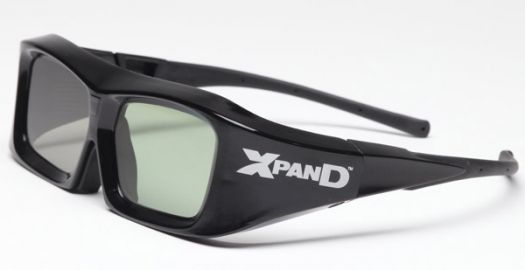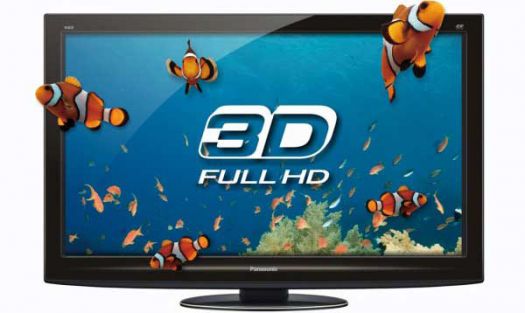When it comes to 3D technology in the home, we certainly get a lot of questions. One of the most-asked has to be, "Why don't my [insert manufacturer name here] glasses work with my [other manufacturer] 3D TV?" Well, it seems like a lot of people inside the consumer electronics industry have actually been wondering the same thing.
Just last week, the Consumer Electronics Association (CEA) announced plans to launch a standards process for 3D glasses. Now comes word that Panasonic and XPAND 3D are working on something very similar, known as M-3DI.
M-3DI is a new standard being jointly developed by the two companies for 3D active-shutter eyewear products. Of course, both have a vested interest. Panasonic is a manufacturer of 3D TVs and Blu-ray 3D products, while XPAND 3D makes 3D eyewear. With M-3DI, you'll be allowed to use the same 3D glasses for your 3D TV, projector, computer monitor, and even at the cinema (well, select Cinemas that use active shutter glasses, that is). The new standard uses infrared technology, although radio communications will also be considered in the near future.

"Joining forces with other 3D product manufacturers to standardize active-shutter 3D eyewear will help ensure that consumers have a superlative 3D experience at home and in the movie theater," said Hirotoshi Uehara, director of the Television Business Unit, Visual Products and Display Devices Business Group of Panasonic's AVC Networks Company. "This is a major step toward creating truly universal 3D eyewear."
Naturally, Panasonic will be the first manufacturer to license the technology. However, several other manufacturers are also on board. So far, those companies include Changhong Electric Co., Ltd., FUNAI Electric Co., Ltd., Hisense Electric Co., Ltd., Hitachi Consumer Electronics Co., Ltd., Mitsubishi Electric Corporation, Seiko Epson Corporation, SIM2 Multimedia S.p.A. and ViewSonic Corporation.
Notably absent from that list would be those other giants of the TV industry, namely LG, VIZIO, Sony and Samsung. LG and VIZIO are aggressively going after the passive 3D market this year [does that make them passive agressive? - ed.] and so will most likely not be involved with an active 3D glasses standard. Samsung dropped IR as a glasses/TV communication system in 2011, with Bluetooth now being their format of choice for glasses synchronization. Neither Samsung nor Sony has commented on M-3DI yet. We hope there isn't another format war in the works.
Aside from compatibility and convenience, M-3DI should offer consumers peace of mind in their 3D purchase. According to the announcement, each M-3DI product will have to adhere to quality control testing and approval procedures.
"M-3DI eliminates confusion, provides a strong, uniform performance standard and ensures that manufacturers can concentrate on innovation and consumers can count on interoperability," says Maria Costeira, XPAND 3D's CEO. "Now, with M-3DI glasses, consumers can enjoy the most advanced, immersive 3D experience in XPAND 3D cinemas, on the laptop or in the workplace or school! We are pleased to join the other participants in M-3DI to ensure that the amazing potential of 3D is achieved in every imaginable 3D application."

Also Check Out: